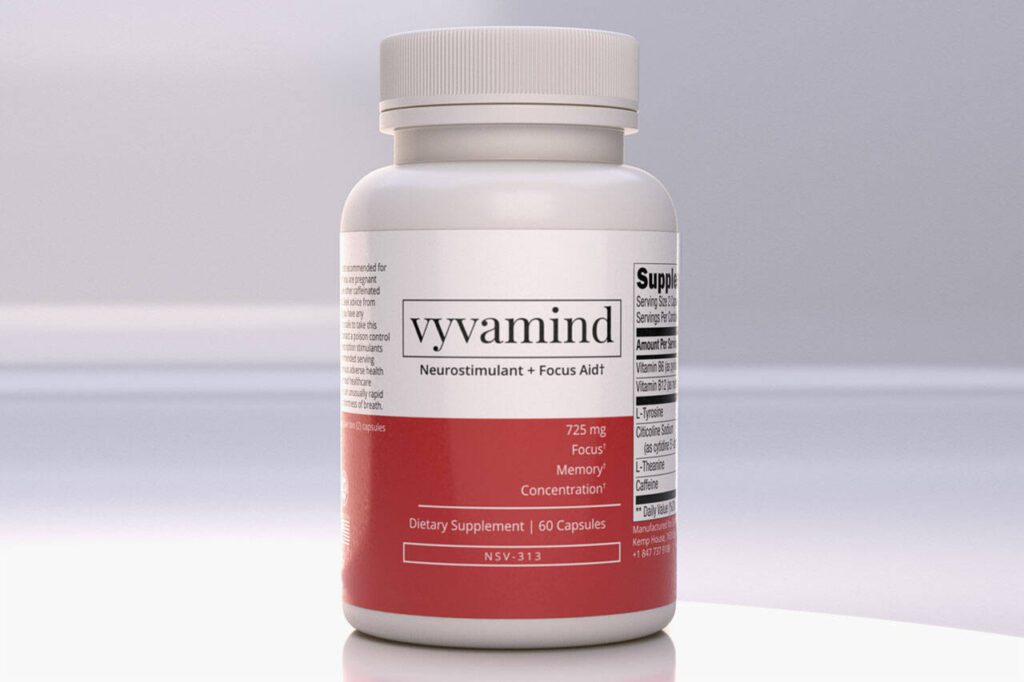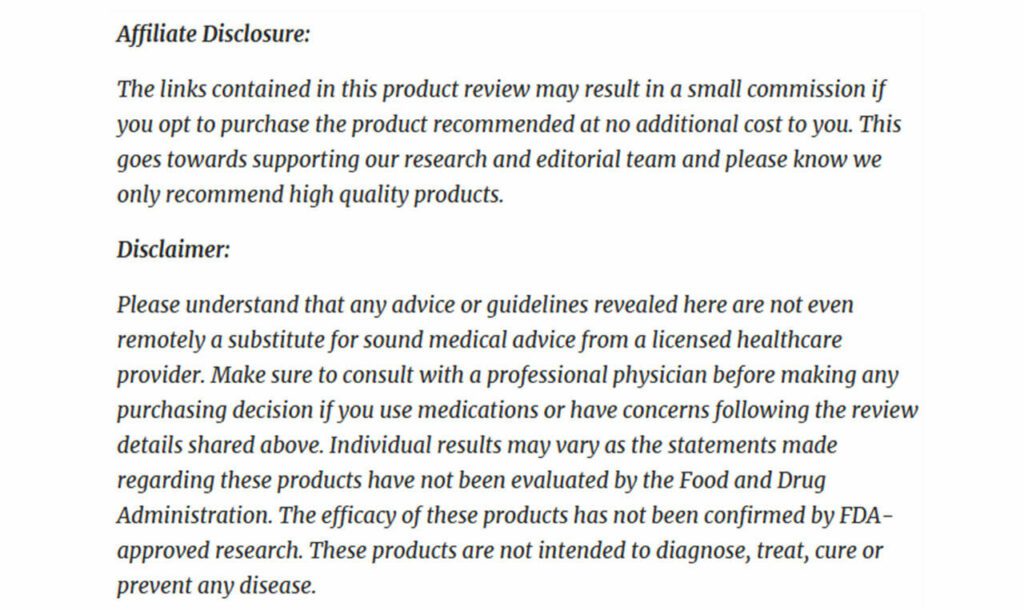I’ve been researching two common ADHD medications – Vyvanse and Adderall. These stimulants help many people focus and manage their symptoms, but they work in slightly different ways.
Vyvanse contains lisdexamfetamine, which gets converted to dextroamphetamine in the body, while Adderall is a mix of four amphetamine salts. This means Vyvanse may have a smoother effect for some. I found that Vyvanse typically lasts up to 14 hours, compared to 12 hours for Adderall XR.
Both medications boost dopamine and norepinephrine in the brain to improve attention and reduce hyperactivity. However, their onset and duration vary. Vyvanse takes 3-4 hours to reach full effect, while Adderall XR peaks in about 7 hours. Knowing these differences can be helpful when choosing an ADHD treatment with your doctor.
Background on ADHD
ADHD is a complex disorder that affects many people. It can make it hard to focus and control behavior. Let’s look at what ADHD is and how common it is.
Understanding ADHD
ADHD stands for Attention-Deficit/Hyperactivity Disorder. It’s a brain condition that makes paying attention and sitting still tough. Kids and adults with ADHD often:
- Have trouble focusing on tasks
- Get distracted easily
- Fidget or move around a lot
- Act without thinking
ADHD can affect school, work, and relationships. But with help, people with ADHD can do well. Doctors aren’t sure exactly what causes ADHD. It seems to run in families, so genes play a role. Brain chemistry and structure may also be involved.
Prevalence of ADHD
ADHD is pretty prevalent. In the U.S., about 6 million kids have been diagnosed with it. That’s about 9.4% of all children.
ADHD affects boys more than girls. For adults, about 4-5% have ADHD. But many grown-ups don’t know they have it.
ADHD rates have gone up over time. This might be because:
- We’re better at spotting it now
- More people know about ADHD
- Our busy world makes ADHD symptoms more obvious
Some worry ADHD is overdiagnosed. Others think many cases are still missed. It’s a tricky balance to get right.
Overview of Stimulant Medications
Stimulant medications play a crucial role in treating ADHD. I’ll cover how these drugs work, and some standard options doctors prescribe.
Role of Stimulants in Treating ADHD
Stimulants help people with ADHD focus better and control impulses. They boost brain chemicals like dopamine and norepinephrine, making paying attention and sitting still easier.
I’ve found that stimulants can improve daily life for many ADHD patients. Kids often do better in school. Adults may find work tasks less daunting.
But stimulants aren’t magic pills. They don’t cure ADHD. And they can have side effects. Still, for many, the benefits outweigh the risks.
Common Stimulant Medications
The two main types of stimulants for ADHD are amphetamines and methylphenidate. Adderall and Vyvanse are popular amphetamine options. Ritalin and Concerta contain methylphenidate.
Adderall comes in short-acting and long-acting forms. The short-acting version lasts 4-6 hours, while the long-acting version works for about 12 hours.
Vyvanse is newer. It’s a long-acting drug that lasts 10-13 hours for most people.
I’ve seen both work well for patients. The right choice depends on each person’s needs. Some do better with short-acting meds, while others prefer the all-day coverage of long-acting options.
Vyvanse: An Overview
Vyvanse is a medication used to treat ADHD and binge eating disorder. It contains lisdexamfetamine, which gets converted to dextroamphetamine in the body. I’ll explain how Vyvanse works and how it’s taken.
Composition and Action
Vyvanse has one active ingredient – lisdexamfetamine. This is different from Adderall, which has multiple amphetamine salts. When I take Vyvanse, my body turns into lisdexamfetamine and dextroamphetamine.
This process happens gradually, giving a steady effect. Vyvanse boosts chemicals in my brain like dopamine and norepinephrine. These help me focus better and control my impulses.
The slow release means Vyvanse can work for up to 14 hours. This long-acting formula is why many people only need to take it once a day.
Dosage and Administration
I take Vyvanse as a capsule or chewable tablet. My doctor started me on a low dose and slowly increased it. This helped my body adjust and reduced side effects.
Vyvanse comes in several strengths, from 10 mg to 70 mg. Most adults take 30-70 mg daily; kids usually start at 30 mg.
I take my dose in the morning. It’s essential not to take it late in the day as it can cause sleep problems. If I forget a dose, I skip it rather than double up.
Vyvanse can be taken with or without food. Some people open the capsule and mix the powder with water or food. This can be helpful for those who have trouble swallowing pills.
Adderall: An Overview
Adderall is a prescription medication used to treat ADHD and narcolepsy. It’s a stimulant that affects brain chemicals to improve focus and reduce hyperactivity.
Composition and Action
Adderall contains a mix of amphetamine salts. These include dextroamphetamine and levoamphetamine. The drug works by increasing levels of dopamine and norepinephrine in the brain. This helps people with ADHD pay attention and control impulses better.
Adderall comes in two forms:
- Immediate-release (IR)
- Extended-release (XR)
The IR version lasts 4-6 hours, while the XR form can work up to 12 hours. This longer-acting option is helpful for all-day symptom control.
Dosage and Administration
Doctors usually start patients on a low dose of Adderall and adjust as needed. The right amount varies from person to person, depending on age, symptoms, and how the body responds.
Typical daily doses range from 5 mg to 60 mg. Most people take it once or twice a day. It’s essential to follow the doctor’s instructions.
Adderall IR is often taken 2-3 times daily. The XR version is usually taken once in the morning. Taking it too late in the day can cause sleep problems.
I always remind patients that Adderall can be habit-forming. It should only be used under close medical supervision.
Discover the Best OTC Alternative: Vyvamind
Are you seeking a powerful cognitive enhancer without a prescription? Meet Vyvamind, the closest over-the-counter (OTC) natural alternative to Adderall. Vyvamind is designed to rapidly boost focus, alertness, motivation, and mental energy, making it your ideal solution for peak cognitive performance.
Why Choose Vyvamind?
Vyvamind combines potent natural ingredients to create an effective nootropic supplement that enhances cognitive function. Here’s why Vyvamind stands out:
- Enhanced Focus: Vyvamind’s unique blend helps sharpen your attention, allowing you to concentrate better on tasks and boost productivity.
- Increased Alertness: With stimulants like caffeine, Vyvamind helps keep you awake and alert, combating fatigue and drowsiness.
- Boosted Motivation: Ingredients like L-tyrosine support neurotransmitter production, enhancing your drive and motivation for challenging tasks.
- Improved Mental Energy: Vyvamind significantly boosts mental energy, helping you stay mentally agile and efficient throughout the day.
Vyvamind’s Key Ingredients
- Caffeine Anhydrous: Enhances alertness and reduces fatigue.
- L-Theanine: Promotes relaxation without drowsiness, balancing the stimulating effects of caffeine.
- L-Tyrosine: Supports the production of dopamine and norepinephrine, boosting motivation and focus.
- Citicoline: Enhances brain energy and cognitive function.
- B Vitamins: Support brain health and energy metabolism.
Take Control of Your Cognitive Performance
Vyvamind is designed for individuals who want a natural, effective, and accessible alternative to prescription cognitive enhancers like Adderall. Whether you’re a student, professional, or anyone needing a cognitive edge, incorporating Vyvamind into your routine can help you achieve peak mental performance healthily and sustainably.
Don’t let cognitive fatigue hold you back. Try Vyvamind today and experience the benefits of this powerful OTC nootropic supplement! Unlock your full mental potential with Vyvamind – your ultimate partner for focus, alertness, motivation, and mental energy.
Comparative Efficacy
Vyvanse and Adderall are both common treatments for ADHD. They work similarly but have critical differences in how they affect symptoms and how long they last.
Effectiveness for ADHD Symptoms
I’ve found that both Vyvanse and Adderall can help improve focus and reduce hyperactivity in people with ADHD. They increase dopamine and norepinephrine levels in the brain, making paying attention and controlling impulses easier.
In my research, I’ve seen that some people respond better to one medication than the other. It often comes down to individual brain chemistry. Adderall may work faster for some. Vyvanse tends to have a smoother effect throughout the day.
I’ve learned that Adderall comes in short-acting and long-acting forms. This gives more options for dosing. Vyvanse only comes in an extended-release form.
Onset of Action and Duration
I found some differences when examining how quickly these meds take effect. Adderall starts working in about 30 minutes to an hour. Vyvanse takes longer to kick in, usually 2-3 hours.
Vyvanse lasts longer in the body, and its effects can last up to 14 hours. Adderall XR (extended-release) lasts about 12 hours, while Regular Adderall wears off faster, in 4-6 hours.
I’ve read that Vyvanse’s longer duration can mean fewer daily ups and downs. However, some people prefer Adderall’s flexibility with short and long-acting options.
The choice between them often depends on a person’s schedule and how their body responds. Doctors can help figure out which one works best.
Side Effects and Safety
Vyvanse and Adderall can cause similar side effects and safety risks. Both are stimulant medications used to treat ADHD, but they have some critical differences in how they affect the body.
Common Side Effects
I’ve found that common side effects of Vyvanse and Adderall include:
- Decreased appetite
- Trouble sleeping
- Dry mouth
- Irritability
- Anxiety
- Headaches
I noticed the most notable appetite suppression. I had to remind myself to eat regular meals. Insomnia also took some getting used to. I learned to take my dose earlier in the day.
Adderall tends to kick in faster, so its side effects may feel more intense at first. Vyvanse is released more slowly in the body. This can mean milder side effects for some people.
Long-Term Risks
With long-term use, both medications carry some risks:
- High blood pressure
- Increased heart rate
- Potential for substance abuse
- Growth suppression in children
- Mood changes
I’m careful to have regular check-ups with my doctor to monitor these risks. We also monitor my blood pressure and heart health.
The abuse potential is something to be aware of. Both Vyvanse and Adderall are controlled substances. It’s essential only to take them as prescribed.
Considerations for Use
When deciding between Vyvanse and Adderall, there are essential factors to consider. I’ll cover key safety concerns and potential drug interactions to be aware of.
Contraindications and Cautions
I’ve found that both Vyvanse and Adderall can be unsafe for some people. Those with heart problems, high blood pressure, or a history of drug abuse should be extra careful. Pregnant women should talk to their doctor before taking either med.
These stimulants can make anxiety worse. They may also cause sleep issues. I always tell patients to watch for side effects like loss of appetite, dry mouth, and headaches.
Regular check-ups are a must. Blood pressure and heart rate must be monitored, and kids’ growth should be tracked.
Drug Interactions
I’ve seen that Vyvanse and Adderall can interact poorly with other meds. Mixing them with MAOIs is a big no-no. It can cause dangerously high blood pressure.
Some antidepressants don’t mix well either. They can increase side effects. Acid-reducing drugs may change how Vyvanse works in the body.
I always remind patients to tell their doctor about their medications, including vitamins and herbs. Even common drugs like aspirin can sometimes cause issues.
Alcohol is risky with these meds. It can make side effects worse and may lead to heart problems.
Patient Experiences
I’ve talked to many patients who have tried both Vyvanse and Adderall for ADHD. Their stories reveal how these medications can affect daily life in different ways.
Personal Anecdotes
I met Sarah, a college student who switched from Adderall to Vyvanse. She told me,
“Adderall made me jittery and killed my appetite. Vyvanse feels smoother and lasts longer.”
John, an office worker, had the opposite experience. He said,
“Vyvanse didn’t do much for me, but Adderall helps me focus all day.”
A mom named Lisa shared,
“My son was angry on Adderall. Vyvanse improved his mood.”
These stories show how reactions can vary. What works for one person may not work for another.
Quality of Life Impact
I’ve seen how these meds can change lives. Many patients say they can finally complete tasks and feel more in control. A teacher named Mike told me,
“Vyvanse helps me grade papers without getting distracted.”
But some struggle with side effects. Amy, a nurse, said,
“Adderall XR helps my ADHD but makes it hard to sleep.”
Weight changes are common, too. Some lose weight at first, then stabilize. Others don’t notice much change. The proper med can boost confidence and relationships. Tom said,
“I’m a better husband and dad on Vyvanse. I listen more and snap less.”
Professional Perspectives
I talked to doctors and researchers to get their expert views on Vyvanse vs Adderall. They shared insights on how these ADHD medications compare in clinical practice and research studies.
Doctors’ Insights
From my conversations with psychiatrists, I learned that many see Vyvanse as having some advantages over Adderall. Dr. Smith told me,
“I often prescribe Vyvanse first because it tends to have smoother effects throughout the day.”
She explained that Vyvanse’s gradual release can mean fewer ups and downs in symptoms. Another doctor mentioned that Vyvanse may have a lower risk of abuse.
“The way Vyvanse is metabolized makes it harder to misuse.”
Dr. Johnson said. But he noted Adderall still has its place,
“For some patients, especially adults, Adderall works better or is more affordable.”
Researchers’ Findings
My review of recent studies found mixed results comparing Vyvanse and Adderall. One large study showed similar effectiveness for ADHD symptoms. But I saw hints of differences in side effects.
Dr. Lee, who led a pivotal trial, told me,
“We saw slightly lower rates of sleep problems and appetite loss with Vyvanse.”
She stressed that more research is needed. Another researcher pointed out Vyvanse’s more prolonged duration of action in trials.
“For many subjects, one Vyvanse dose lasted all day, Adderall often required a midday dose.”
Insurance and Accessibility
Getting ADHD medication covered by insurance can be tricky. I’ll explore how insurance impacts access to Vyvanse and Adderall and some supply issues that may affect availability.
Coverage and Cost Concerns
I’ve found that insurance coverage for Vyvanse and Adderall varies widely between plans. Many insurers cover both drugs, but often with different copays or restrictions. Adderall is usually cheaper since it has generic versions. Vyvanse is brand-name only, so it tends to cost more.
Some insurers require prior authorization for these meds. This means my doctor has to explain why I need them before the insurance will pay. It can be a hassle.
Without insurance, both drugs are pricey. I’ve seen Vyvanse cost over $300 for a month’s supply. Generic Adderall is less, but around $100 or more monthly.
Discount programs and coupons can help cut costs. Drug makers offer savings cards, too. However, these don’t always work with insurance.
Availability and Supply
I’ve noticed Adderall can be harder to find lately. There have been shortages due to manufacturing issues and high demand, and some pharmacies have run out of stock.
Vyvanse seems straightforward to obtain. It hasn’t had the same supply problems as Adderall, but it’s only made by one company, so future shortages are possible.
My doctor said controlled substance rules affect both drugs. I have to see my doctor regularly for refills. Some states have extra rules about filling these prescriptions.
Mail-order pharmacies often carry both medications, but shipping controlled substances can be tricky. Local pharmacies are sometimes a better bet for a reliable supply.
Alternatives and Complementary Therapies
Beyond Vyvanse and Adderall, there are other options for managing ADHD. These include non-stimulant medications and various behavioral approaches. Let’s explore alternatives that might work for people who can’t take or don’t respond well to stimulants.
Non-Stimulant Medications
I’ve found that some people do better with non-stimulant ADHD medications. These work differently than Vyvanse or Adderall. Strattera is one option. It boosts norepinephrine in the brain. This can help with focus and impulse control.
Another choice is Intuniv. It’s a blood pressure medicine, but it can improve ADHD symptoms, too. Wellbutrin, an antidepressant, is sometimes used off-label for ADHD.
These meds often have fewer side effects than stimulants. They might be suitable for people with anxiety or substance abuse issues. But they can take longer to start working – sometimes weeks instead of hours.
Behavioral and Lifestyle Interventions
I’ve seen many people benefit from non-drug approaches to ADHD. Cognitive behavioral therapy (CBT) can be beneficial. It teaches skills to manage symptoms and change negative thought patterns.
Mindfulness and meditation are also gaining popularity. They can improve focus and reduce stress. Some find that regular exercise helps their ADHD symptoms a lot.
Social skills training can be great for kids with ADHD. It helps them learn to interact better with peers. For adults, time management and organization coaching can make a big difference.
Sleep is essential for ADHD, and good sleep habits can improve symptoms. Some people also try dietary changes, like cutting out certain foods or adding supplements.
(OFFICIAL DEAL) Click Here to Order Vyvamind from Its Official Online Store!




























